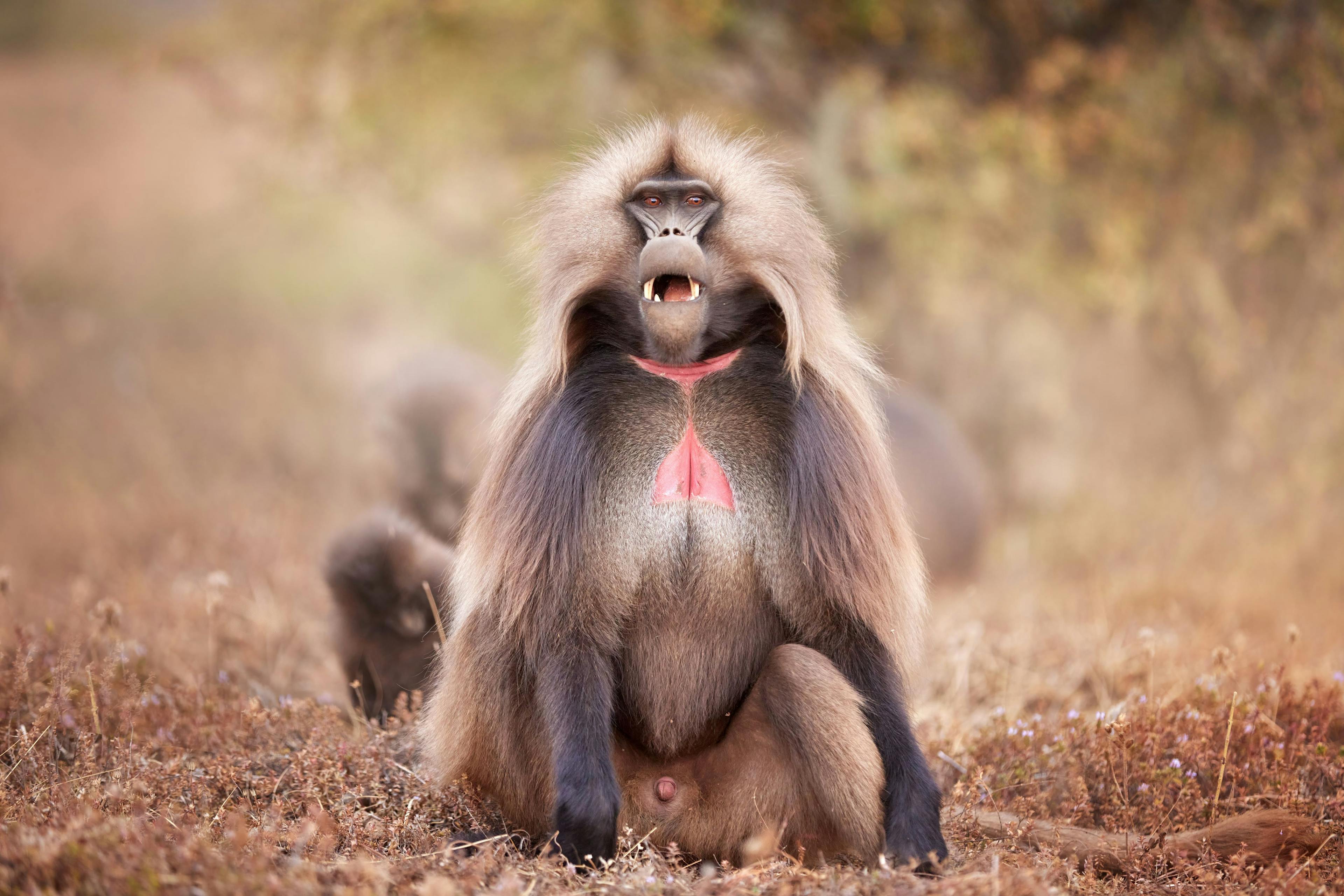Gelada





Love is in the air at Diergaarde Blijdorp! The park is dedicated to love and romance from January 10th to February 25th. Explore more about the love story of the gelada on the website or take a stroll down Lovers' Lane in the park!
Geladas live in intricate social groups. The highest-ranking male gets the privilege of mating with the females. Social behavior is prevalent among this species: grooming, forming bonds, and establishing friendships both within and across different groups. They sleep together at night and forage for grasses during the day. The day often begins with social interactions to strengthen the bonds for that particular day. Higher-ranking females are most often involved in fights, which mostly occur between different harems.

20 years
Maximum 50 centimeters
50-70 centimeters
♀ 11 kilograms
♂ up to 18,5 kilograms

These sociable monkeys have an impressive range of gestures, facial expressions, and sounds to chat with each other. For instance, a gelada can send a warning by raising its eyebrows. And if that's not convincing enough, they'll curl up their flexible upper lip, showing off their enormous canine teeth. What's even more heartwarming? Geladas have special sounds reserved just for their close pals – kind of like a nickname! We playfully refer to their quick lip movements as "wobbling"

Geladas live in harems, meaning that a group of up to 15 females is led by at least 1 and at most 4 males. When young males reach maturity, they split off and join a bachelor group with other young males. When these young males become strong enough, they attempt to form their own harem with females from other groups. They can also oust the old male from an existing harem. When the females prefer the newcomer over the old male, something quite remarkable happens: the females that were pregnant halt the development of the fetus. They terminate the pregnancy and become fertile again more quickly.
Geladas are found on the Ethiopian highlands, between altitudes of 1,800 and 4,400 meters. Ravines and valleys surround the area, marking the boundaries. Their habitat is shrinking as the local population also uses their land for livestock and agriculture.
...The gelada is the only species of monkey that grazes on grass?
...You hear a group of geladas from far away? The group talks to each other all day long.
...The gelada is the only primate that can make the same rapid lip movements and accompanying sounds as humans?
The Ethiopian highlands are the exclusive habitat of the gelada. Most of their diet consists of grasses, making the species particularly vulnerable to the disappearance of their habitat. It is increasingly and frequently being replaced and used for agriculture and livestock grazing. To better protect the gelada, Diergaarde Blijdorp supports a long-term research project. This research explores how geladas utilize their habitat and also investigates the perspectives of local farmers and herders regarding geladas. It seeks to uncover the knowledge necessary for coexisting and sharing the grasslands harmoniously.
In Diergaarde Blijdorp, there are currently two separate groups of geladas: a bachelor group and a family group. To ensure that one male doesn't monopolize all the offspring, the males take turns with the female group. After a while, when several young ones have been born, one male returns to the bachelor group, and another male takes his place with the ladies. You can find the geladas across from the Rivièrahal on the monumental square.